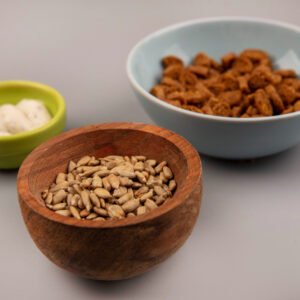Selecting the right nutrition for your livestock, poultry, or companion animals directly impacts their health, productivity, and overall well-being. With countless options available in today’s market, understanding how to choose the best food for your animals requires knowledge of nutritional science, species-specific needs, and quality indicators. This comprehensive guide will help you make informed decisions that benefit both your animals and your bottom line.
Understanding Animal Nutritional Requirements
Every animal species has unique dietary needs based on their digestive system, life stage, and intended purpose. Ruminants like cattle and sheep require high-fiber diets to support their complex stomach systems, while monogastric animals such as pigs and poultry need easily digestible proteins and carbohydrates.
The National Research Council provides detailed nutritional guidelines for various livestock species. According to their recommendations, dairy cattle require approximately 16-18% crude protein in their diet during lactation, while growing pigs need 18-20% protein content for optimal development. These specifications form the foundation for selecting appropriate animal feeds.
Understanding metabolizable energy requirements helps determine proper feed quantities. Beef cattle typically need 2.2-2.6 Mcal/kg of metabolizable energy, while laying hens require approximately 2.85 Mcal/kg to maintain egg production levels.
Key Factors in Choosing Quality Animal Feed
Nutritional Content Analysis
The first step in selecting the best food for your animals involves examining guaranteed analysis labels. These labels provide minimum crude protein, minimum crude fat, maximum crude fiber, and maximum moisture content. Higher-quality feeds typically contain precise nutrient profiles tailored to specific animal requirements.
Amino acid profiles matter significantly for monogastric animals. Lysine, methionine, and threonine serve as essential amino acids that must be present in adequate quantities. Quality feed manufacturers provide detailed amino acid breakdowns to help producers make informed decisions.
Vitamin and mineral fortification ensures animals receive essential micronutrients. Vitamin A supports immune function and reproduction, while vitamin D3 aids calcium absorption. Trace minerals like zinc, copper, and selenium play crucial roles in enzyme function and overall health maintenance.
Feed Ingredient Quality Assessment
Premium animal feeds use high-quality ingredients sourced from reputable suppliers. Corn, soybean meal, and wheat serve as common base ingredients, but their quality varies significantly based on processing methods and storage conditions.
Mycotoxin testing represents a critical quality control measure. The Food and Drug Administration sets maximum allowable levels for aflatoxins and other harmful compounds that can develop in grains during storage. Quality feed manufacturers conduct regular testing to ensure product safety.
Digestibility coefficients indicate how effectively animals can utilize feed nutrients. Higher digestibility means animals extract more nutrition from each pound of feed consumed, resulting in better feed conversion ratios and improved performance.
Species-Specific Nutritional Needs
Cattle Feed Selection Guidelines
Beef cattle require different nutritional profiles depending on their production stage. Growing calves need higher protein levels (14-16%) compared to mature breeding cattle (8-10%). The best food for your animals in cattle operations balances energy density with fiber content to maintain proper rumen function.
Forage quality significantly impacts cattle nutrition. High-quality hay should contain 12-15% crude protein and have a relative feed value above 150. Poor-quality forage requires supplementation with concentrated feeds to meet nutritional requirements.
Dairy cattle have elevated nutritional demands due to milk production. Lactating cows require approximately 18% crude protein and need careful attention to calcium-phosphorus ratios to prevent metabolic disorders like milk fever.
Poultry Nutrition Optimization
Layer hens need feeds containing 16-18% protein with adequate calcium levels (3.5-4.5%) to support eggshell formation. The best food for your animals in poultry operations includes balanced amino acid profiles to maximize egg production and shell quality.
Broiler chickens require starter feeds with 22-24% protein for rapid growth during their first few weeks. As birds mature, protein requirements decrease while energy density remains important for efficient feed conversion.
Organic poultry feeds must meet specific standards set by the United States Department of Agriculture. These feeds exclude synthetic additives, antibiotics, and genetically modified ingredients while maintaining nutritional adequacy.
Swine Feed Formulation Principles
Growing pigs require feeds with 18-20% crude protein and specific amino acid ratios. Lysine serves as the first limiting amino acid in most corn-soybean meal diets, requiring careful attention to achieve optimal growth rates.
Sow nutrition varies dramatically between gestation and lactation phases. Pregnant sows need controlled energy intake to prevent excessive weight gain, while lactating sows require high-energy, high-protein diets to support milk production and prevent body condition loss.
Nursery pig feeds often include specialty ingredients like plasma proteins and organic acids to support digestive health during the weaning transition. These premium ingredients help maintain feed intake and reduce post-weaning growth checks.
Learn everything you need to know about annatto and its vibrant color, from natural origins to uses and health benefits.
Feed Safety and Quality Assurance
Storage and Handling Best Practices
Proper feed storage prevents nutrient degradation and contamination. Feeds should be stored in clean, dry environments with temperatures below 70°F and relative humidity under 65%. These conditions minimize mold growth and preserve feed quality.
First-in, first-out inventory rotation ensures feeds are used before losing nutritional value. Most commercial feeds maintain optimal quality for 30-60 days when stored properly, though some specialty feeds have shorter shelf lives.
Pest control programs protect stored feeds from rodent and insect contamination. Physical barriers, monitoring systems, and integrated pest management strategies help maintain feed integrity throughout storage periods.
Quality Control Testing
Regular feed testing verifies nutritional content matches label guarantees. Many producers conduct monthly or quarterly analyses to ensure consistent feed quality from their suppliers.
Microbiological testing identifies potential bacterial contamination that could harm animal health. Salmonella, E. coli, and other pathogens can proliferate in poorly manufactured or stored feeds.
Heavy metal analysis ensures feeds meet safety standards for lead, cadmium, and mercury content. These contaminants can accumulate in animal tissues and pose risks to both animal and human health.
Economic Considerations in Feed Selection
Cost-Benefit Analysis Framework
The cheapest feed option rarely provides the best value for animal operations. Calculating cost per unit of gain helps identify feeds that deliver optimal economic returns through improved feed conversion efficiency.
Feed conversion ratios measure how effectively animals convert feed into desired products like milk, meat, or eggs. High-quality feeds often produce better conversion ratios, offsetting higher initial costs through improved productivity.
Labor costs associated with feed handling and distribution should factor into selection decisions. Pelleted feeds may cost more initially but can reduce feeding time and waste compared to mash feeds.
Long-Term Financial Planning
Consistent feed quality reduces veterinary costs associated with nutritional deficiencies and digestive disorders. Investing in premium feeds often results in healthier animals with lower medical intervention requirements.
Production performance improvements from quality nutrition compound over time. Small improvements in daily gain or milk production can generate significant revenue increases over an animal’s productive lifetime.
Risk management considerations include supplier reliability and price stability. Establishing relationships with reputable feed manufacturers helps ensure consistent supply and quality during market fluctuations.
How CMS Industries Supports Your Animal Nutrition Goals
CMS Industries has established itself as a leading agricultural products manufacturer and supplier, offering comprehensive animal feed solutions that meet diverse livestock needs. With two decades of experience in the agricultural sector, CMS Industries understands the critical importance of balanced nutrition in animal production systems.
The company’s commitment to quality and higher nutrition-content supplies ensures that farmers and livestock producers receive feeds that support optimal animal performance. CMS Industries sources ingredients ethically and maintains strict quality control standards throughout their manufacturing processes, providing customers with reliable animal feed products that deliver consistent results.
Located in Kachchh, Gujarat, CMS Industries leverages India’s position as one of the world’s largest agricultural producers to offer competitive pricing without compromising nutritional quality. Their established supply chain and distribution network ensure timely delivery of animal feeds to producers across India and international markets.
Implementation Strategies for Feed Selection
Transition Planning
Gradual feed transitions prevent digestive upset and maintain animal performance. Most species require 7-14 days to fully adapt to new feed formulations, with ruminants typically needing longer adjustment periods than monogastric animals.
Monitoring animal response during feed changes helps identify potential issues early. Key indicators include feed intake, body condition, production performance, and general health observations.
Record keeping systems track feed performance metrics and help identify optimal feeding strategies for specific operations. Detailed records support data-driven decisions for future feed purchases.
Performance Monitoring Systems
Regular body condition scoring provides objective measures of nutritional adequacy. Most livestock species have established scoring systems that help producers evaluate whether current feeding programs meet animal needs.
Production records including milk yield, egg production, or growth rates help assess feed effectiveness. Comparing performance metrics before and after feed changes quantifies the impact of nutritional modifications.
Health monitoring systems identify potential nutritional deficiencies or excesses. Working with veterinarians and nutritionists helps interpret health data and adjust feeding programs accordingly.
Boost your farming efficiency with CMS Agro Foods products designed to enhance quality, nutrition, and crop yield.
Future Trends in Animal Nutrition
Precision Nutrition Technologies
Automated feeding systems increasingly use sensors and artificial intelligence to optimize individual animal nutrition. These technologies can adjust feed delivery based on real-time production data and individual animal requirements.
Near-infrared spectroscopy allows rapid on-farm analysis of feed nutritional content. This technology helps producers verify feed quality and adjust feeding programs based on actual rather than predicted nutrient levels.
Digital tracking systems monitor individual animal performance and automatically adjust feeding recommendations. These systems help optimize nutrition while reducing labor requirements and feed waste.
Sustainable Feed Ingredients
Alternative protein sources including insects, algae, and single-cell proteins are gaining acceptance in animal nutrition. These ingredients can reduce environmental impact while maintaining nutritional quality.
Precision fermentation technologies produce specific nutrients and additives without traditional agricultural inputs. These innovations may revolutionize animal nutrition by providing consistent, high-quality ingredients with reduced environmental footprints.
Circular agriculture systems integrate waste streams from animal production into feed manufacturing processes. These approaches reduce waste while creating additional revenue opportunities for livestock producers.
Conclusion
Selecting the best food for your animals requires careful consideration of nutritional requirements, quality indicators, and economic factors. Success depends on understanding species-specific needs, evaluating feed ingredients thoroughly, and implementing proper storage and handling practices.
The investment in high-quality animal nutrition pays dividends through improved animal health, enhanced production performance, and reduced veterinary costs. By following the guidelines outlined in this comprehensive guide, producers can make informed decisions that benefit both their animals and their operations.
Ready to optimize your animal feeding program? Connect with CMS Industries to explore their comprehensive range of high-quality animal feeds designed to meet your specific livestock nutrition requirements and support your production goals.
Frequently Asked Questions
What is the most important factor when selecting animal feed?
Nutritional content that matches your animals’ specific requirements is paramount. Consider protein levels, energy density, and essential nutrients based on species, age, and production stage for optimal results.
How often should I evaluate my animals’ feed program?
Review feed programs quarterly or whenever production metrics change. Monitor body condition, performance data, and feed conversion ratios to identify opportunities for improvement and ensure continued effectiveness.
What are signs that my current feed isn’t meeting animal needs?
Poor feed conversion, declining production, weight loss, poor coat condition, and increased health issues often indicate nutritional deficiencies. Consult with nutritionists to evaluate and adjust feeding programs.
How can I reduce feed costs without compromising animal nutrition?
Focus on feed conversion efficiency rather than purchase price alone. High-quality feeds often provide better cost-per-pound of gain, reducing overall feeding costs through improved animal performance.
What storage practices maintain feed quality and safety?
Store feeds in clean, dry environments below 70°F with humidity under 65%. Use proper inventory rotation, implement pest control measures, and regularly inspect storage areas for signs of contamination or spoilage.





